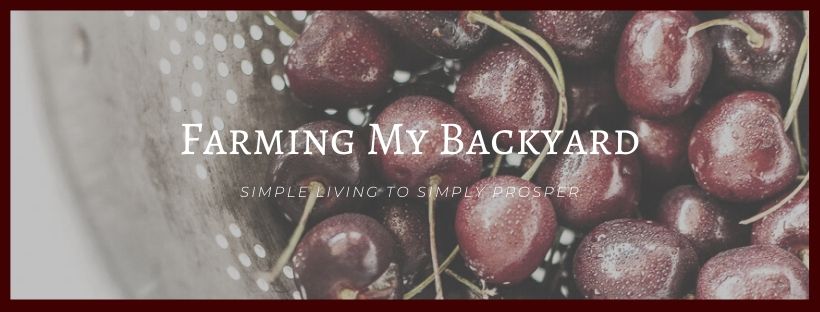February marks the beginning of a new gardening year for almost the entire United States. You may be wondering what to plant in February, especially if your area is still snowy and icy. Here are which plants to start growing indoors and out this month!

Click here to read more!
What To Plant In January
What To Plant In March
What To Plant In April
What To Plant In May
What To Plant In June
What To Plant In July
What To Plant In August
What To Plant In September
What To Plant In October
What To Plant In November
What To Plant In December
What To Plant In February By USDA Plant Hardiness Zone
The USDA Plant Hardiness Zones are created by dividing the United States into various zones based on their coldest temperatures. These zones are helpful in giving us an idea of what is likely to grow well in a given location at each time of year.
Of course, your micro climate makes a big difference too. The individual characteristics of your property, and even spaces within your garden can create warmer and cooler areas where specific plants may thrive.
All of the plants suggested below can be grown without season extenders. If you are using a greenhouse, cloches, or covers, you may even be able to grow more than what’s listed for your zone.
Zone 2
Finally Zone 2 gets to plant something! You can start cauliflower and onions indoors!
Zone 3
Zone 3 can also get going indoors with cauliflower, leeks, onions, parsley, and pumpkins.
Zone 4
Also indoors right now, Zone 4 can start artichokes, bell peppers, cabbage, cauliflower, celery, leeks, onions, and pumpkins.
Zone 5
I hope you have a lot of indoor seed starting space if you are in Zone 5, because you can start artichokes, bell peppers, broccoli, cauliflower, celery, chard, eggplant, kale, leeks, lettuce, mint, onion, pumpkin, and scallions.
Lucky Zone 5b also gets chili peppers, marrow, and mustard greens.
Zone 6
Zone 6 also has quite the list of seeds to start indoors:
- Artichokes
- Bell pepper
- Celery
- Eggplant
- Gooseberry
- Leeks
- Lettuce
- Marrow
- Mint
- Parsnip
- Scallions
- Tomatillo
Mizuna and horseradish can be planted directly outdoors.
Zone 7
Zone 7 has a mix of both indoor and outdoor seeds that can be started in February. Indoors you should start artichokes, bell peppers, Brussels sprouts, cauliflower, celery, chard, chicory, chili peppers, eggplant, gooseberries, marrow, mint, parsnips, and tomatoes.
Outdoors, go for asparagus crowns, beets, broccoli, cabbage, carrot, collards, kale, lettuce, mizuna, mustard greens, onion, radish, rhubarb, spinach, and turnips.
Zone 8
If you live in Zone 8, start these vegetables indoors:
- Artichokes
- Bell peppers
- Brussels sprouts
- Cantaloupe
- Chili peppers
- Chives
- Coriander
- Cucumber
- Endive
- Fennel
- Leeks
- Lemon balm
- Marrow
- Oregano
- Parsnips
- Rosemary
- Thyme
- Tomato
- Zucchini
And directly outdoors you can also plant asparagus, beets, broccoli, cabbage, carrot, cauliflower, chard collards, eggplant, garlic, kale, kholrabi, lettuce, mizuna, mustard greens, onion, peas, potatoes, rhubarb, spinach, turnips, and yams.
Zone 9
Let the outdoor gardening begin! What to plant in February for Zone 9 is a long list, with many outdoors:
- Amaranth
- Arugula
- Beets
- Borage
- Cardoon
- Carrot
- Celery
- Chard
- Collards
- Coriander
- Daikon
- Dill
- Endive
- French tarragon
- Jerusalem artichoke
- Kale
- Kholrabi
- Lettuce
- Mustard greens
- Oregano
- Peas
- Pumpkin
- Radish
- Rosemary
- Sage
- Spinach
- Sunflower
- Turnip
- Watermelon
- Yam
Indoors Zone 9 may also start artichokes, basil, bell peppers, cantaloupe, chili peppers, chives, cucumber, fennel, eggplant, leeks, lemon balm, loofah, marrow, okra, parsley, parsnip, thyme, tomato, and zucchini.
Zone 10
Prime garden time for Zone 10 is happening now. Here’s what you can plant in February:
- Amaranth
- Artichokes
- Arugula
- Asparagus
- Beans
- Beets
- Bell peppers
- Borage
- Cardoon
- Carrot
- Chili peppers
- Collards
- Coriander
- Corn
- Daikon
- Dill
- Eggplant
- Endive
- Fennel
- Ginger
- Gooseberries
- Kholrabi
- Lettuce
- Marjoram
- Marrow
- Mustard greens
- Okra
- Oregano
- Peas
- Potatoes
- Pumpkin
- Radish
- Rosemary
- Shallots
- Spinach
- Sunflower
- Sweet potatoes
- Tarragon
- Thyme
- Tomatillos
- Tomatoes
- Turnips
- Zucchini
And indoors you may start basil, cantaloupe, cucumber, leeks, loofah, and parsley!
Zone 11
All the plants in Zone 11 right now can be planted directly outdoors. Here’s what you can plant:
- Basil
- Beans
- Bell peppers
- Chili peppers
- Chives
- Coriander
- Cucumbers
- Eggplant
- Ginger
- Loofah
- Marrow
- Napa cabbage
- Oregano
- Parsley
- Peas
- Potatoes
- Pumpkin
- Savory
- Sunflower
- Sweet potatoes
- Tomatillo
- Tomato
- Watermelon
- Zucchini
Zone 12
Get planting while you still can for Zone 12. You can grow beans, bell peppers, chili peppers, cucumber, eggplant, loofah, marrow, parsley, taro, tomato, and watermelon.
Zone 13
There’s a few things to plant now for Zone 13. It’s time for beans, bell peppers, chili peppers, loofah, parsley, and taro.
Depending on your zone, you can start planting indoors or outdoors pretty much every in the US during February! Have fun gardening!
Want To Raise Happy Chickens?
Subscribe for our newsletter and get the free email course Intro To Backyard Chickens as well as a free printable checklist to walk you through step by step!
